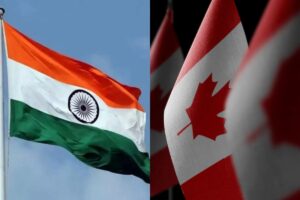As Maharashtra prepares for its upcoming elections on November 20, 2024, the state is abuzz with political activity, heightened voter awareness, and evolving election strategies. With voter slips now available online, citizens are gearing up to cast their ballots in what is expected to be a tightly contested race. The election process is being keenly observed both by domestic stakeholders and the broader international community, as the results will not only influence the state’s future governance but also have national political ramifications.

The voting process will culminate on November 20, with the much-anticipated election results set to be announced on November 23, 2024. This article explores the key dynamics of the Maharashtra elections, the importance of the upcoming vote, and what the outcome might mean for the political landscape.
The Importance of Maharashtra Elections
Maharashtra, one of India’s largest and most influential states, plays a pivotal role in the country’s political, economic, and cultural landscape. With a population of over 120 million, the state is home to Mumbai, India’s financial capital, and a central hub for industry, media, and entertainment. As a result, the state’s election outcome holds significant weight in shaping India’s political discourse.
1. Political Stakes for Major Parties
- Shiv Sena: A dominant force in Maharashtra’s political scene for decades, the Shiv Sena has seen internal divisions in recent years. The leadership contest between the factions of Uddhav Thackeray and Eknath Shinde has further complicated the party’s standing in this election.
- BJP: The Bharatiya Janata Party (BJP), a major national player, is hoping to expand its influence in Maharashtra by aligning with various regional parties and presenting itself as a unifying force. The party is looking to build on its stronghold in the state and present a robust challenge to the existing political order.
- Congress and NCP: The Congress-NCP (Nationalist Congress Party) alliance faces a tough battle to retain its influence, especially with the rise of alternative regional players. The coalition’s ability to maintain unity and address the growing dissatisfaction among certain voter segments will be a key focus during the elections.
2. Voter Demographics and Concerns
- Maharashtra’s diverse electorate presents both opportunities and challenges for political parties. Rural vs. urban dynamics, youth voter engagement, and issues related to employment, healthcare, and education are major areas of concern.
- The youth, particularly first-time voters, are expected to play a crucial role in shaping the outcome. Their concerns about jobs, technology, and social issues could be a deciding factor in several constituencies.
- Economic issues are also at the forefront, with many voters seeking policies that support small businesses, agriculture, and sustainable development.
The Digital Push: Voter Slips and Online Access
In a bid to make the election process more accessible and transparent, the Election Commission of India has introduced digital voter slips. Voters can now access their voter identification slips online, making it easier for them to check their eligibility and ensure they have the correct documentation on election day. The online initiative is seen as a significant step in enhancing voter participation, particularly in urban areas where many people may otherwise face logistical challenges.
1. The Role of Technology in Modern Elections
- Digital initiatives like online voter slip access and the use of apps for real-time election updates are part of a broader trend to bring technological solutions to traditional election systems. This not only streamlines the voting process but also empowers voters with information at their fingertips.
- Maharashtra has also seen increased use of social media and mobile platforms for political campaigns. Parties have embraced digital tools to engage voters, especially the younger demographic, through targeted messaging and real-time updates.
2. Ensuring Free and Fair Voting
- The Election Commission has been working to ensure the election process remains free from malpractices. Stringent measures, such as monitoring social media for fake news, increased security during the voting process, and transparent counting protocols, are in place to maintain the integrity of the election.
Key Election Issues and Public Sentiment
As voters prepare to head to the polls, several issues are dominating the campaign trail. These issues will not only influence how people vote but also reflect the changing concerns of Maharashtra’s electorate.
1. Economic Challenges and Development
- One of the central themes of the election has been Maharashtra’s economic future. With rising inflation, unemployment, and economic inequality, many voters are concerned about the state’s ability to address these challenges.
- Local development projects, infrastructure upgrades, and policies related to agriculture and small businesses are critical points of discussion for candidates and parties alike.
2. Farmers and Rural Voters
- Rural Maharashtra is also focused on promises related to agriculture, land reforms, and improved access to resources like irrigation and crop insurance. Agricultural distress, low crop prices, and issues of water scarcity continue to be significant concerns in rural constituencies.
3. Social Issues: Gender Equality and Youth Engagement
- Gender equality, women’s rights, and youth empowerment are gaining prominence as election issues. The youth demographic, in particular, is demanding more opportunities for education, employment, and innovation, while also calling for greater social reforms.
4. Regional Identity and Secularism
- Regional identity politics remain a key driver in Maharashtra’s elections. Several parties are invoking regional pride and emphasizing Maharashtra’s distinct cultural heritage, while others are focused on secularism and addressing religious and communal issues in a multi-ethnic state.
What to Expect on Election Day and Beyond
The Maharashtra elections are set to be a highly anticipated event with far-reaching consequences for the state and the nation. Key points to watch out for include:
1. Voter Turnout
- The final voter turnout will be an important indicator of the electorate’s engagement with the election process. Higher turnout, especially from the youth and rural segments, could signal a shift in traditional voting patterns.
- Increased participation from marginalized groups and communities could also indicate a broader push for inclusive governance.
2. Post-Election Dynamics
- After the votes are cast, the period leading to the announcement of results on November 23 will be marked by heightened political activity. As coalition talks and alliances begin, the results will have significant implications for the political stability of Maharashtra and potentially set the tone for national politics.
- Voter sentiment and the aftermath of the elections will also impact the credibility of political leaders, with major parties recalibrating their strategies based on the outcome.
Conclusion: A Defining Moment for Maharashtra’s Political Future
The Maharashtra elections of 2024 are more than just a routine political contest—they are a defining moment for the state’s future trajectory. With intense competition among the major political players, evolving voter priorities, and an increasingly digitalized election process, these elections will be one of the most closely watched in recent years. As November 20 approaches, all eyes will be on the voting booths, waiting to see which party or coalition will emerge victorious in shaping the future of Maharashtra.
The outcome, expected on November 23, will not only determine the political leadership of the state but will also have broader ramifications for the national political landscape, making these elections a pivotal moment in India’s democratic journey.






